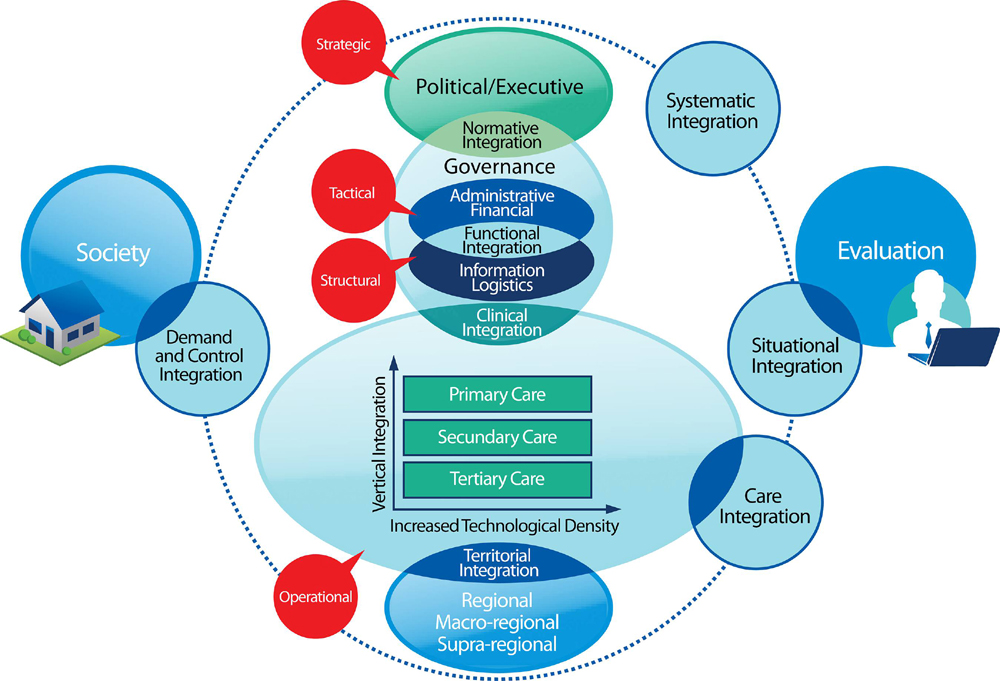Integration: A Conversation with the Neuroscience Institute
SOURCE: ACA News ~ October 2013
By Christina Acampora, DC
It’s happening! More and more we see examples of outreach from the medical community to doctors of chiropractic (DCs). In February 2013, the physicians and staff of the Neuroscience Institute and Comprehensive Spine Center at Advocate Illinois Masonic Medical Center invited all local DCs to a dinner and case presentation by Stephen Troyanovich, DC. The physicians who attended the presentation were seeking information and evidence on the proven health benefits of chiropractic. As someone who spends her days educating and assisting DCs with how to become more integrated, I am always intrigued as to what the mechanisms are behind this phenomenon. I asked for an interview, and, in keeping with its friendly February outreach, the Neuroscience Institute was more than accommodating in granting me time in June 2013.
In attendance:
• John Song, MD, Neurosurgery
• Raina Gupta, MD, Neurology
• Emily Jakacki, director, Neurosciences Institute & Hospital Based Programs
DR. ACAMPORA: It seems that despite evidence based research illustrating the benefits of manipulation, chiropractic care continues to be a medical treatment of last resort or one into which patients often self-refer. Why do you think that is?
DR. CANDIDO: I think, by and large, people who do interventional pain medicine were always aware of [chiropractic as] the other side to the coin — in other words, alternative therapies — but we had very little appreciation or knowledge of these therapies during our training and early on in our practices. We tend to refer to the people we are most familiar with, to send our patients where we expect we’ll have easy access to them and have them referred back to us in a timely fashion. Chiropractic, while it’s something I have always been interested in, is something we don’t have immediate access to. We don’t have chiropractors on our faculty, in our pain practices or in our neurology or neurosurgery clinic. It’s been difficult to forge a bond or a relationship with people we don’t have immediately on our radar screens.
DR. SONG: For me, in my practice, it’s still about offering patients alternative therapies when they are not a surgical candidate, then letting them help guide their own care plan: chiropractic, physical therapy, acupuncture, yoga. It’s their choice.
EMILY: Most medical physicians don’t know what it is chiropractors do, and they don’t understand the research that supports chiropractic care as a therapeutic choice. It’s important to approach medical doctors with the frame of mind to better educate them on chiropractic practice: what conditions are treated and what techniques are used.
DR. ACAMPORA: How can the chiropractic community better integrate with the medical community to be more present in allopathic physicians’ minds?
DR. CANDIDO: Many years ago a very well-known neurosurgeon pulled me aside, and we had a discussion of what constitutes success in medicine, or the three “As:” availability, affability and ability.
Availability is being ever present, being ever on someone’s mind.
Affability is being someone who has a good personality, someone who is charismatic and who can communicate effectively.
And, of course, there’s ability. What I think really needs to happen — immediately — is the recognition from major health care facilities in the country that chiropractic is a credible treatment option, to gain a foothold in those facilities and to be present. Attend meetings, show up in the cafeterias and initiate a relationship among medical professionals that doesn’t necessarily have to involve off-site locations or off-campus areas of referral. Communicating with people directly in front of you is different than talking on a telephone. I know I communicate in certain ways that give me an appreciation that you’re on my side when it comes to managing mutual patients.
DR. SONG: I think by trying to get to know the medical doctors you can start to build a level of trust as well as a working relationship. Working with doctors and mutual patients, sharing medical records, evaluations and treatment plans would be helpful. Chiropractors also seem somewhat fragmented. This may be a reason why relations haven’t gone very far — not speaking with one voice. If you have a roomful of people all talking, you’re not going to hear anything except a bunch of opinions, but everybody saying the same thing — or a common platform — gets heard.
DR. GUPTA: I have many patients that have had beneficial care and treatments by chiropractors. I do feel that there is a significant role for chiropractors in many of the neurologic problems I see. I am interested in, and open to, increasing my knowledge regarding evidence-based benefits of chiropractic care as it relates to different pathologies. I would like to learn about different services and resources offered by chiropractors in my community to be able to better refer my patients. I feel that as a team, chiropractors and physicians can better serve our patients.
DR. ACAMPORA: Being available and having more presence is very difficult for a DC, who would likely have trouble getting into independent medical offices that are hospital-based. Being readily available comes with barriers. Do you have any insight into the hospital politics that regulate this situation?
DR. CANDIDO: I think hospitals are becoming much more amenable to a dialogue with chiropractors. That’s the first step, obviously, to any resolution — you have to have an open dialogue. I think this enhances the prospects for a burgeoning practice or a practice that wants to integrate and be thought of as a partner.
DR. ACAMPORA: When you think of DC care, what do you think are some of the strengths that benefit your patients?
DR. CANDIDO: The biggest advantages to chiropractic are that it’s noninvasive and not addictive. I think we have too many patients who are offered procedures or interventions which have dubious outcomes associated with them. I also, of course, have to quiver and shake when patients come in requesting narcotic analgesics to manage their pain. I would look for something that is a handson approach, something that teaches patients non-interventional and non-pharmacological methodologies to improve themselves. I am very much in favor of adjunctive therapy to complement what I do.
DR. ACAMPORA: In a perfect world, physical therapy (PT) and chiropractic care can benefit each other; however, some medical doctors feel that it’s one or the other. Why do you think that there is still the thought of PT first?
DR. CANDIDO: Habit and, again, proximity. I don’t think physical therapy and chiropractic are necessarily uncomplementary, but they are certainly distinct. I think perhaps we have a blurring of the decision in the minds of the uninitiated people who are uninformed or undereducated about what it is chiropractic does. I think there may be a tendency for people to look at manipulative therapies to managing pain and lump them together, which is not appropriate. There are certain things chiropractors do that physical therapists don’t offer, and vice versa.
DR. ACAMPORA: If a DC sat down with you, what would be important for you to hear?
DR. CANDIDO: I’ve been extremely impressed by chiropractors’ intense knowledge of spinal anatomy and the things they might be able to offer to enhance care for my patients. It’s showing the flexibility, the utility of what it is that chiropractic has to benefit my patients, and an available option that’s non-interventional and non-pharmacological. I may have overlooked chiropractic in the past because I tend to get into my own little domain of what it is I’m trained in and expected to do for patients. So, it’s exceeding the expectation of what my biases are in relationship to managing patients’ pain.
DR. SONG: I’ve interacted with a number of chiropractors. I like to think of myself as a scientist, and research does a lot to speak to a concern or misperception that physicians have. We like to see research, we like to see studies and we like to see proof of what it is you’re saying. I think it’s just having excuses to get together and talk.
DR. ACAMPORA: What are some of the misperceptions that you think the medical community might have toward chiropractic care?
DR. CANDIDO: The biggest is that chiropractors lack the fundamental training and education to be considered bona fide health care providers. I think that stems from an under appreciation of what the chiropractic education is all about and the rigors it entails to get a chiropractic degree.
DR. SONG: Something that doesn’t help is there seems to be a number of chiropractors who are very anti-medical establishment, who refuse to refer someone in their care to a physician, even for something that’s clearly not going to be corrected with chiropractic care. Historically, there’s been some misunderstanding and miscommunication. Hopefully, we’re starting to break this down. I think there are things to be learned on both sides of the fence.
DR. ACAMPORA: The number one hurdle for communication is simply getting time, especially with primary care physicians (PCPs). What suggestions do you have to overcome this barrier?
DR. SONG: As specialists, we have the same problem when marketing our services. Primary care physicians are extremely busy. They’ve got 80 patients to see in a day, and if they’re late, they get backed up. I don’t know if there’s any better way to approach PCPs. We haven’t found it. It takes a long time, and everyone’s really busy and we’re in the same medical group. Essentially it’s just really hard. When we approach a PCP, we ask: “How can we help you, the provider? What can we do to make your life easier?” We help facilitate communication. I think the first thing to do is to just get in front of them. It comes down to how you present yourself, and I think the easiest way would be if you have a patient in need, try to communicate with their physician.
As this article is published during National Chiropractic Health Month, I think it’s important to seize the opportunity to promote chiropractic not only in your communities but within your local medical community as well, throughout the year. As we have just seen, forging relationships takes time and commitment even when it is MD to MD.
Stay tuned for the next issue of ACA News, in which we will examine some of the barriers identified in this interview and explore specific solutions that you can employ in your own integration attempts. I leave you with one last quote that I really identified with. When I asked about the success of the February event, Dr. Song and Dr. Candido replied:
“When we had this event in February, we heard all night from chiropractors, ‘we can’t believe you reached out.’ But “We had no idea you were waiting for it!”
To view more questions and in-depth answers, readers can view a full copy of the transcript at www.alignedmethods.com/Advocate
Advocate Illinois Masonic Medical Center
The specialists at Advocate Illinois Masonic Medical Center’s Neurosciences Institute and Comprehensive Spine Center are dedicated to advancing the diagnosis and treatment of neurological disorders and conditions. These specialty care physicians practice the most advanced treatments under a philosophy of care focused on access.
The Institute’s primary goal is to provide unsurpassed care to its patients through:
• Use of the least invasive procedures with the most effective treatment options available;
• Availability when needed most;
• Access to a team of dedicated specialists;
• Primary Stroke Center designation, which demonstrates a commitment to comprehensive, quality care for stroke patients.
Dr. Acampora is the author of Marketing Chiropractic to Medical Practices and the founder of Aligned Methods, a company specializing in helping DCs establish informed working relationships with medical physicians.






Leave A Comment